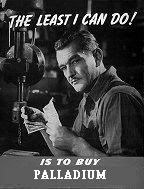Sir Ysbadden wrote:Because of this i feel it necasary to point out a little known fact that Lovecraft did not invent his star C'thulu was actually taken from someone elses work. the mythos in general is actually an amalgam of different writers works. Lets not forget mythos stories like the king in yellow.
Pray illuminate us and tell us from whose work Lovecraft borrowed Cthulhu.
Although it is clear Lovecraft read and was influenced by
The King in Yellow, written by Robert W. Chambers--and published in 1895--(see HPL's "The Whisperer in Darkness" especially), as far as I know, there is no reference to Cthulhu in that work.
The integration of Chambers' Hastur and the Yellow Sign (and whatever else came out of
The King in Yellow) was done primarily by August Derleth and other writers after HPL's death. In fact, much of what has come to be known as the
Cthulhu Mythos was cobbled together by Derleth and reflects his own philosophy much more than HPL's original, nihilistic view. So, when you say, "the mythos in general is actually an amalgam of different writers works" this is, generally speaking, true. But somewhat misguided nonetheless. Most of those who have written tales connected to the Cthulhu Mythos have done so years and years after HPL's original tales.
During the latter part of Lovecraft's life, there was much borrowing of story elements among the authors of the "Lovecraft Circle", a clique of writers with whom Lovecraft corresponded. This group included Clark Ashton Smith, Robert E. Howard, Robert Bloch, Frank Belknap Long, Henry Kuttner, and others.
Lovecraft recognized that each writer had his own story-cycle and that an element from one cycle would not necessarily become part of another simply because a writer used it in one of his stories. For example, although Smith might mention "Kthulhut" (Cthulhu) in one of his Hyperborean tales, this does not mean that Cthulhu is part of the Hyperborean cycle. A notable exception, however, is Smith's Tsathoggua, which Lovecraft appropriated for his revision of Zelia Bishop's "The Mound" (1940). Lovecraft effectively connected Smith's creation to his story-cycle by placing Tsathoggua alongside such entities as Tulu (Cthulhu), Yig, Shub-Niggurath, and Nug and Yeb in subterranean K'n-yan.
Most of the elements of Lovecraft's mythos were not a cross-pollination of the various story-cycles of the Lovecraft Circle, but were instead deliberately created by each writer to become part of the mythos — the most notable example being the various arcane grimoires of forbidden lore. So, for example, Robert E. Howard has his character Friedrich Von Junzt reading Lovecraft's Necronomicon in "The Children of the Night" (1931), and Lovecraft in turn mentions Howard's Unaussprechlichen Kulten in both "Out of the Aeons" (1935) and "The Shadow Out of Time (1936).
http://en.wikipedia.org/wiki/Cthulhu_Mythos



